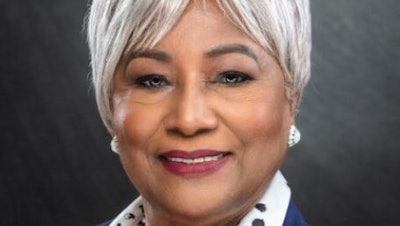Succession planning is paramount in Historically Black Colleges and Universities (HBCUs) as it can play a critical role in preserving these institutions' legacy, values, and unique contributions. With a strong succession plan, HBCUs can ensure a smooth transition of leadership, cultivate a pipeline of diverse and visionary leaders, and continue to fulfill their vital mission of empowering generations of students and advancing social justice. The significance of succession planning in HBCUs goes beyond institutional stability; it is a commitment to sustaining the legacy and impact of our historic institutions for years to come.
 Dr. Christine Johnson McPhail
Dr. Christine Johnson McPhail
Succession planning plays a vital role in the long-term success and stability of the university. It is a proactive strategy that ensures a seamless transition of leadership positions when key personnel, such as presidents, depart. By identifying and cultivating potential successors, HBCUs can mitigate the risks associated with sudden vacancies, maintain institutional momentum, and promote continuity in their vision and mission.
Succession planning is a collaborative effort involving university and community stakeholders. This process includes the board of trustees, senior administrators, department heads, faculty members, and human resources professionals.
The components of succession planning include the following:
• Needs assessment: HBCUs must assess their current and future leadership requirements to identify the positions and roles requiring succession planning.
• Talent identification: A thorough evaluation of potential candidates is crucial. The process may involve a combination of performance appraisals, interviews, and feedback from supervisors and colleagues.
• Professional development programs: Once high-potential individuals are identified, strategic professional development programs should be implemented to enhance their leadership capabilities. This may include mentoring, training workshops, executive education programs, and job rotations.
• Institutional knowledge transfer: HBCUs should encourage knowledge sharing and cross-training to ensure the transfer of critical institutional knowledge from experienced leaders to potential successors.
• Performance evaluation: Regular evaluation of potential successors helps assess their progress, identify areas for improvement, and provide constructive feedback.
• Continuity planning: Succession planning should not be limited to individual positions but should also consider the broader institutional strategy to ensure continuity in the face of leadership changes.
Assessing effectiveness and success
The effectiveness of succession planning can be measured through various indicators, such as
tracking the percentage of leadership positions filled through internal promotions; monitoring the time taken to fill critical positions; evaluating successors' performance and satisfaction levels after assuming leadership roles; and assessing employee engagement and retention rates.
Succession planning is deemed successful when the university's operations and strategic direction remain intact after a key leader departs; the successor upholds the university's vision, mission, and values; the university maintains or improves its performance indicators, including academic achievements, financial stability, and reputation.
Succession planning in universities typically involves multiple levels, including:
• Executive leadership: Identifying and grooming potential successors for critical executive positions, such as the president, provost, and vice president.
• Academic leadership: Developing a pipeline of leaders for academic positions, including department chairs, deans, and academic program directors.
• Administrative leadership: Identifying individuals with leadership potential for administrative roles, such as finance, human resources, information technology, and student affairs.
• Board of trustees: Trustees play a pivotal role in succession planning, carrying significant responsibilities in ensuring a seamless transition of university leadership positions. As stewards of institutional integrity and long-term vision, trustees must actively identify and prepare potential successors, foster a culture of leadership development, and uphold the institution's mission and values throughout the succession process. Their commitment and expertise are instrumental in safeguarding the future success and sustainability of the university.
Ultimately, the significance of succession planning and sustainability in HBCUs extends beyond the campus boundaries. In embracing succession planning and sustainability, HBCUs have the power to drive positive change, inspire future generations, and make a lasting impact not only within their campuses but also in the broader society. It is a journey that aligns with the historical mission, values, and aspirations of those who have fought for educational equity and social progress.
Dr. Christine Johnson McPhail serves as president of Saint Augustine’s University. She also serves on the Kansas State University Community College Leadership Program (CCLP) National Advisory Board.
The Roueche Center Forum is co-edited by Drs. John E. Roueche and Margaretta B. Mathis of the John E. Roueche Center for Community College Leadership, Department of Educational Leadership, College of Education, Kansas State University.
![Sm 7791 Soft Final[273284]](https://img.diverseeducation.com/files/base/diverse/all/image/2023/02/SM__7791_soft_final_273284_.63f03279efba2.png?auto=format%2Ccompress&crop=faces&fit=crop&h=48&q=70&rect=0%2C54%2C1920%2C1920&w=48)





















